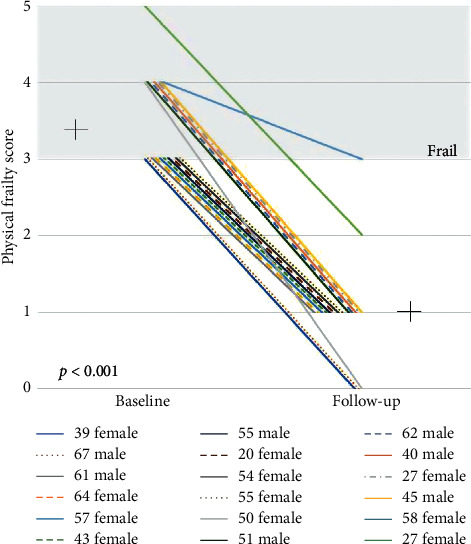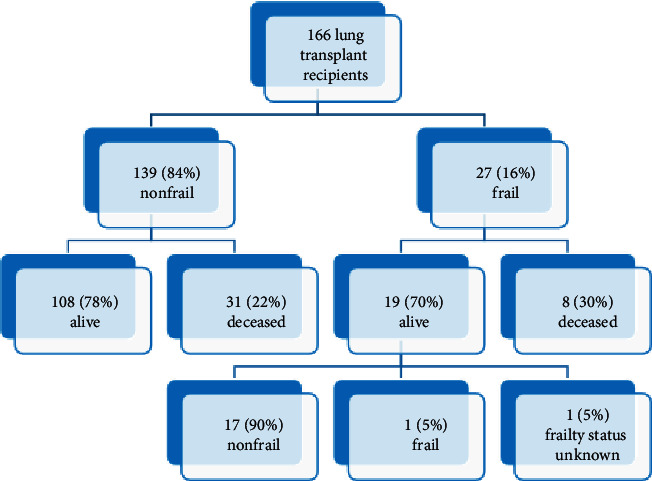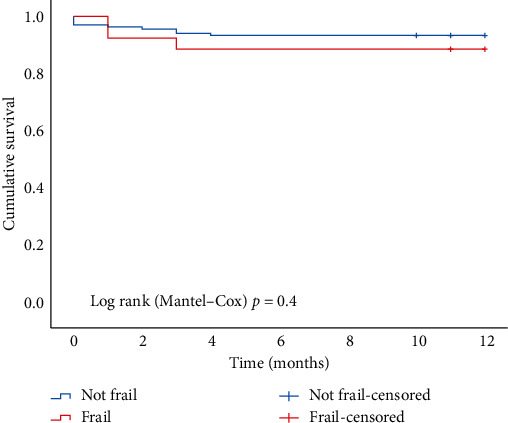Reversibility of Frailty after Lung Transplantation.
IF 2.2
Q3 SURGERY
Journal of Transplantation
Pub Date : 2020-08-07
eCollection Date: 2020-01-01
DOI:10.1155/2020/3239495
引用次数: 15
Abstract
Background Frailty contributes to increased morbidity and mortality in patients referred for and undergoing lung transplantation (LTX). The study aim was to determine if frailty is reversible after LTX in those classified as frail at LTX evaluation. Methods Consecutive LTX recipients were included. All patients underwent modified physical frailty assessment during LTX evaluation. For patients assessed as frail, frailty was reassessed on completion of the post-LTX rehabilitation program. Frailty was defined by the presence of ≥ 3 domains of the modified Fried Frailty Phenotype (mFFP). Results We performed 166 lung transplants (frail patients, n = 27, 16%). Eighteen of the 27 frail patients have undergone frailty reassessment. Eight frail patients died, and one interstate recipient did not return for reassessment. In the 18 (66%) patients reassessed, there was an overall reduction in their frailty score post-LTX ((3.4 ± 0.6 to 1.0 ± 0.7), p < 0.001) with 17/18 (94%) no longer classified as frail. Improvements were seen in the following frailty domains: exhaustion, mobility, appetite, and activity. Handgrip strength did not improve posttransplant. Conclusions Physical frailty was largely reversible following LTX, underscoring the importance of considering frailty a dynamic, not a fixed, entity. Further work is needed to identify those patients whose frailty is modifiable and establish specific interventions to improve frailty.



肺移植后虚弱的可逆性。
背景:虚弱导致转诊和接受肺移植(LTX)的患者发病率和死亡率增加。该研究的目的是确定那些在LTX评估中被分类为虚弱的人在LTX后的虚弱是否可逆。方法:纳入连续LTX接受者。所有患者在LTX评估时都进行了改良的身体虚弱评估。对于被评估为虚弱的患者,在完成ltx后康复计划后重新评估虚弱程度。通过存在≥3个改良Fried脆性表型(mFFP)结构域来定义脆性。结果:共进行肺移植166例(体弱患者27例,16%)。27例体弱多病患者中有18例进行了体弱多病再评估。8名虚弱的病人死亡,一名州际接受者没有返回重新评估。在重新评估的18例(66%)患者中,ltx术后的虚弱评分总体下降((3.4±0.6至1.0±0.7),p < 0.001),其中17/18(94%)不再被归类为虚弱。改善在以下虚弱的领域:疲劳,流动性,食欲和活动。移植后握力没有改善。结论:LTX后身体虚弱在很大程度上是可逆的,强调了将虚弱视为动态而非固定实体的重要性。需要进一步的工作来确定那些虚弱是可以改变的患者,并建立具体的干预措施来改善虚弱。
本文章由计算机程序翻译,如有差异,请以英文原文为准。
求助全文
约1分钟内获得全文
求助全文

 求助内容:
求助内容: 应助结果提醒方式:
应助结果提醒方式:


